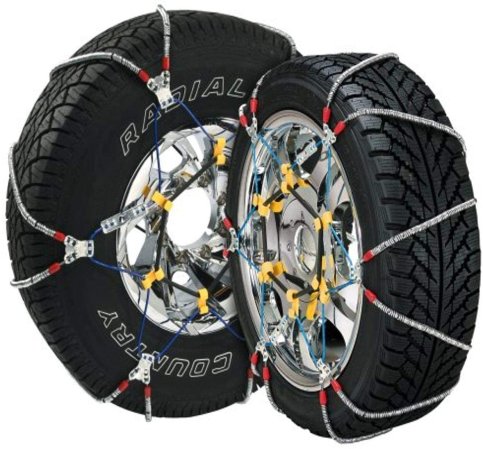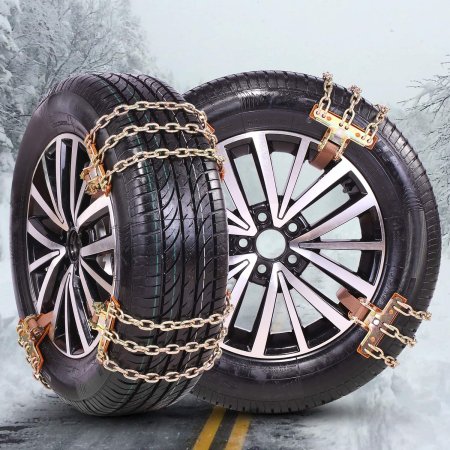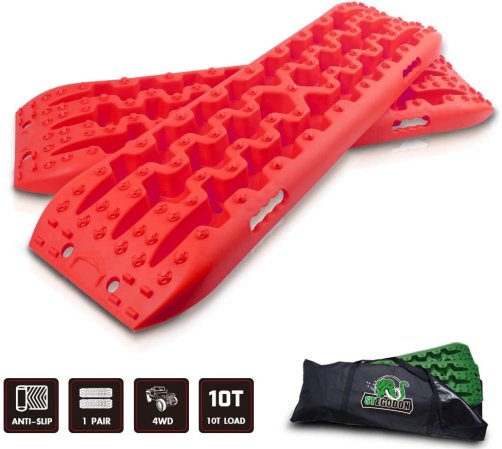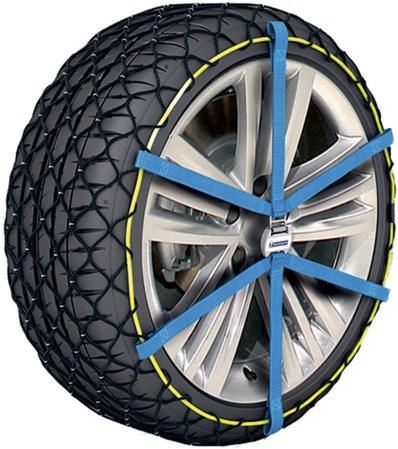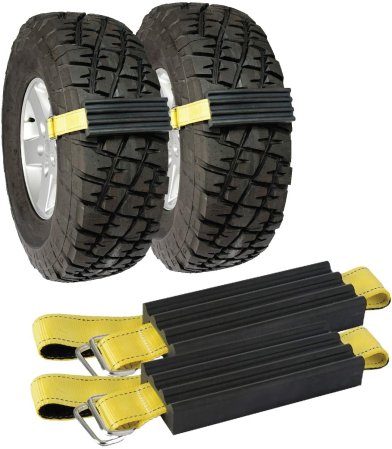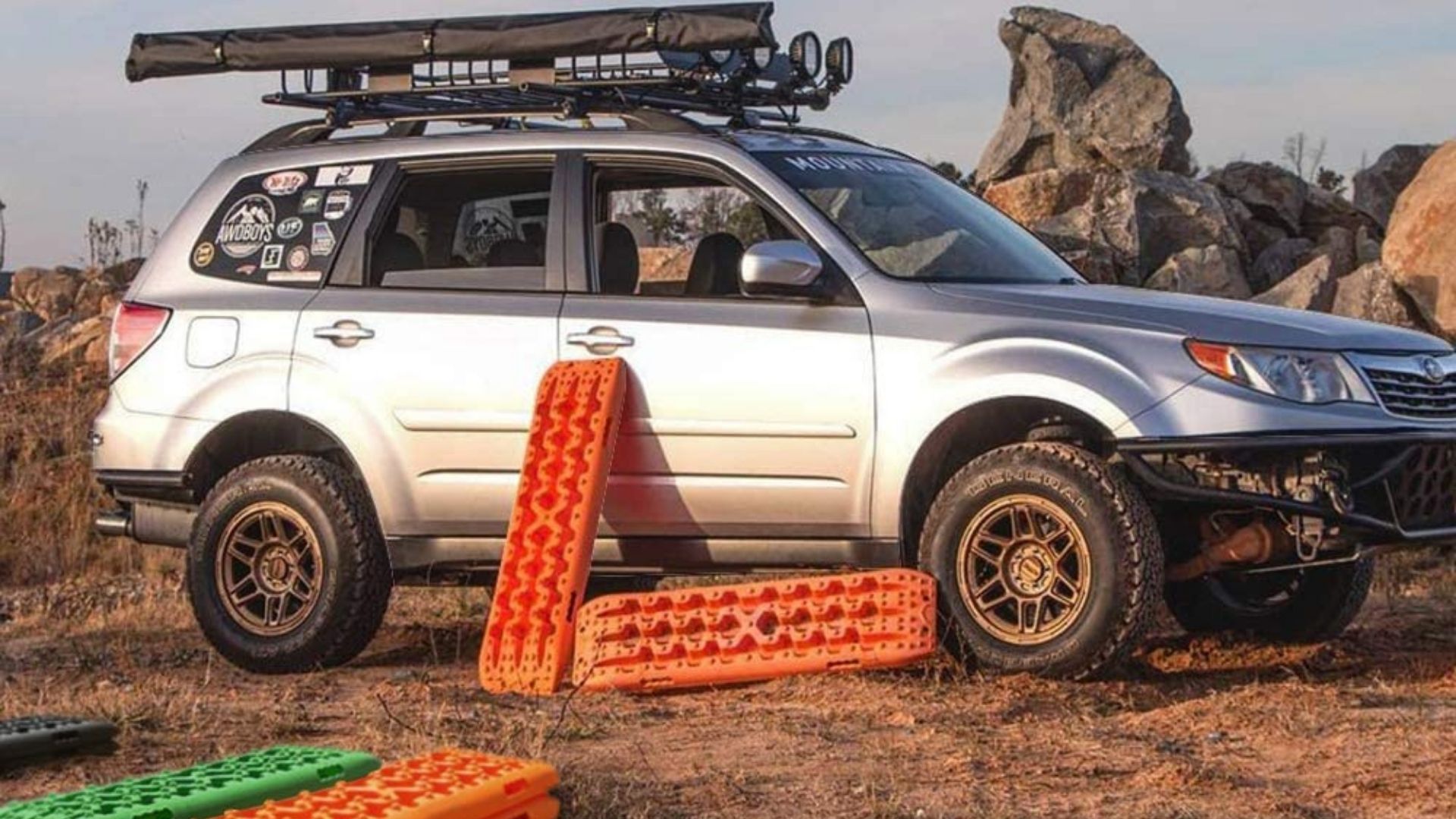

We may earn revenue from the products available on this page and participate in affiliate programs.
Each winter, you’d swear half the drivers on the road mark the changing seasons by removing their brains and tucking them safely away until spring. With summer tires spinning, traction lights flashing, and a look of total shock on their faces, they slide right through busy intersections. Most of this is driver error; some of it is inappropriate equipment selection, although that’s also the fault of the driver. Spare yourself the yuletide humiliation by investing in winter tires, at a minimum. For deeper snow and boiler-plate ice, you’ll need to step up your game with some kind of enhanced traction. Snow chains are a tried and true solution, and many states require them under certain weather conditions. We’re certainly fans of classic snow chains, but a few other approaches deserve your attention, too.
Which option you choose will ultimately depend on how you plan on using it. Will you be covering long distances in deep snow, or do you just need a little help getting unstuck every so often? In either case, there’s something for you on this list.
Security Chain Super Z6
Fun-Driving snow chains
Stegodon recovery tracks
Michelin Easy Grip Evolution
TracGrabber traction device
Related: 7 magnificent multitools that belong in every toolbox
Types of snow chains
For decades, people have wrapped their tires in chain links for extra traction on ice and in deep snow. If you look closely at snow plows or heavy equipment, you’ll probably see just how effective this technique can be. By replacing chains with cables or synthetic mesh, some manufacturers have created a solution that provides almost as much grip with a much smoother, quieter ride. Either of these options can stay on your vehicle for an extended period of time. Other types of snow chains are designed to get you out of trouble and back on the road, where they should be removed before continuing on. These come in the form of grippy blocks that strap onto each tire for an extra boost, or a platform that can help your tire roll across slippery terrain like snow or sand. This style is meant to be used in a pinch, not as a sustained source of traction.
Key features of snow chains
- Materials: All snow chains and their alternatives need to be build from very durable materials like metal, rubber, or dense nylon. Remember that they will need to function under the weight of your vehicle and in very low temperatures.
- Size: It’s important to match any snow chain to the size of your tires. Most snow chains are pretty versatile, but verify that they fit (and that you know how to install them) before they become necessary.
- Intended use: Are you more likely to drive through the mountains in a snowstorm or escape a messy parking lot after a snowplow blocks you in? Some snow chains can rack up mile after mile, while others are meant to overcome a few feet of troublesome snow.
- Installation: Even the best snow chains only work when they’re installed properly. Failure to do so can leave you stranded or beat your car mercilessly when chains come loose at speed. Luckily, we found options that are easy to install and offer secure fitment.
Benefits of snow chains
Snow chains are necessary for the harshest conditions and can give any tire extra grip when it’s needed. Remember that all-wheel drive is helpful, but it doesn’t do any good if your tires can’t grip the road. It also can’t help you turn or stop. To avoid building up speed only to blow through a stop sign, you need good old-fashioned traction. Snow chains should be reserved for the few situations when they’re called for, but they’re more affordable (and often more effective) than dropping a bunch of money on a second set of tires for winter.
Snow chain pricing
A set of two basic snow chains can be found for as little as $45. The smoothest, quietest, most advanced options cost up to $135 per pair. Some people balk at spending that much money on something that spends most of its time in the trunk, but you’ll be glad to have them when the going gets rough. We’ll also point out that you’ll have an awfully hard time finding a single snow or studded tire for that price. They’re also a cheap way to avoid having to call a tow truck or your insurance agent.
